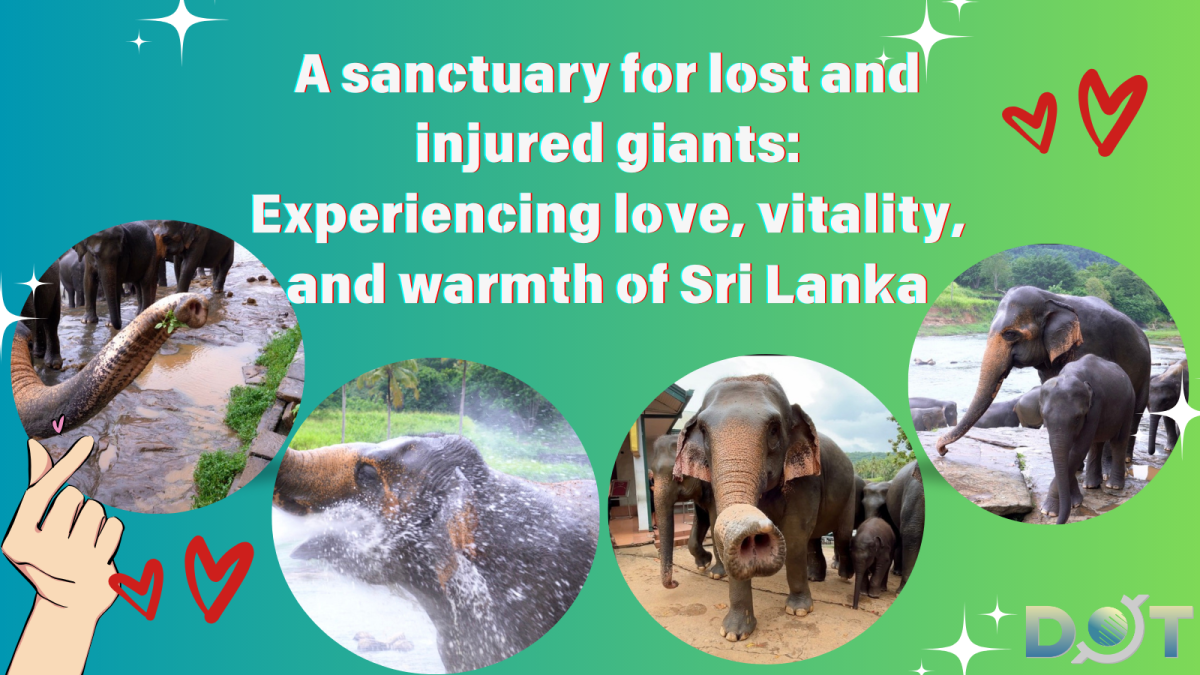By Felicia LI
For wild elephants, this era is filled with sadness and various dangers.
Elephants are one of the oldest animals on Earth, relying on their remarkable memory to migrate across their territories. Today, humans increasingly encroach upon their habitats, and they face the threat of being hunted.
In 1975, the Sri Lankan Wildlife Department established the world's first "Elephant Orphanage" for homeless young elephants. This orphanage primarily cares for orphaned elephants, those injured in traps, individuals lost from their herds, and those wounded or sick due to conflict.
There are two elephant orphanages in the world, located in Sri Lanka and Kenya.
In the Indian Ocean island nation of Sri Lanka, the ancient tradition that venerates elephants is deeply rooted in the local culture, reflecting the high esteem in which the Sri Lankan people hold elephants. However, many orphaned elephants still struggle for survival in the harsh jungles of Sri Lanka.
To save these "orphans," the Sri Lankan Wildlife Department built an "Elephant Orphanage" in 1975, primarily to care for young elephants that have lost their mothers in the jungle.

Over the past 30 years, due to increasing human encroachment, the criteria for admission to the orphanage have expanded to include elephants injured in traps, those lost from their herds, and those wounded in conflict. The elephants living here are well cared for, enjoying a leisurely life that includes regular meals, bathing, and even engaging in tasks like moving timber and performing shows. Some even give birth here, preparing for a peaceful retirement.
To alleviate the financial burden on the government, the orphanage opens its doors to tourists, with trained elephants performing to attract donations. Visitors can feed the elephants and enjoy "close encounters" with these magnificent creatures.
An adult elephant consumes about 180 kilograms of leaves or bark daily, significantly burdening the caretakers. Additionally, elephants defecate around 16 times daily, producing over 100 kilograms of dung. The orphanage collects thousands of kilograms of dung daily. Finding ways to generate revenue and manage the accumulating dung became a perplexing dilemma for the orphanage.
Eventually, a brilliant idea solved this problem. Maximus, a local renewable energy paper company, has successfully turned elephant dung into valuable products, creating eco-friendly paper and gifts. This dung paper initiative has also generated employment opportunities for locals, encouraging voluntary elephant protection and reducing poaching.
Paper products made from elephant dung are now exported to Japan, Europe, and the United States; even some world-renowned leaders have used these products. Elephant dung contains a significant amount of fiber, with one kilogram of dung capable of producing 60 to 66 sheets of A4-sized paper. Fresh raw materials are continuously available since the company is located right next to the orphanage.
Upon entering the park, you will see many elephants freely playing around. The orphanage is home to nearly a hundred elephants. It is open to the public, and since caring for elephants is a substantial expense, there is an admission fee. Visitors can buy tickets to enter, purchase food to feed the elephants, and enjoy close interactions with them.
Also Read:
Journalist's view | Navigating sights, sounds, and surprises of Sri Lanka
Journalist's view | Faiths, fashions, and resilient spirit of Sri Lanka




















Comment